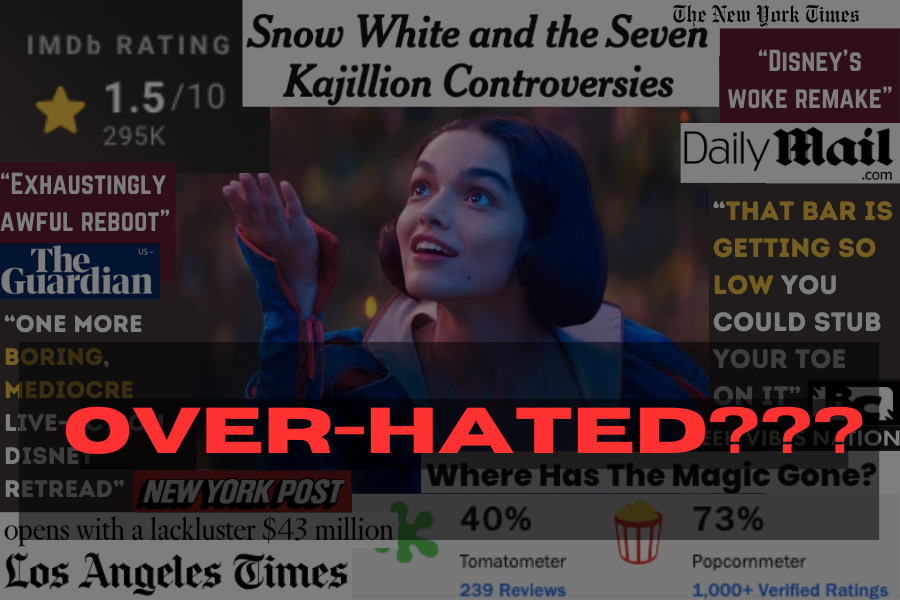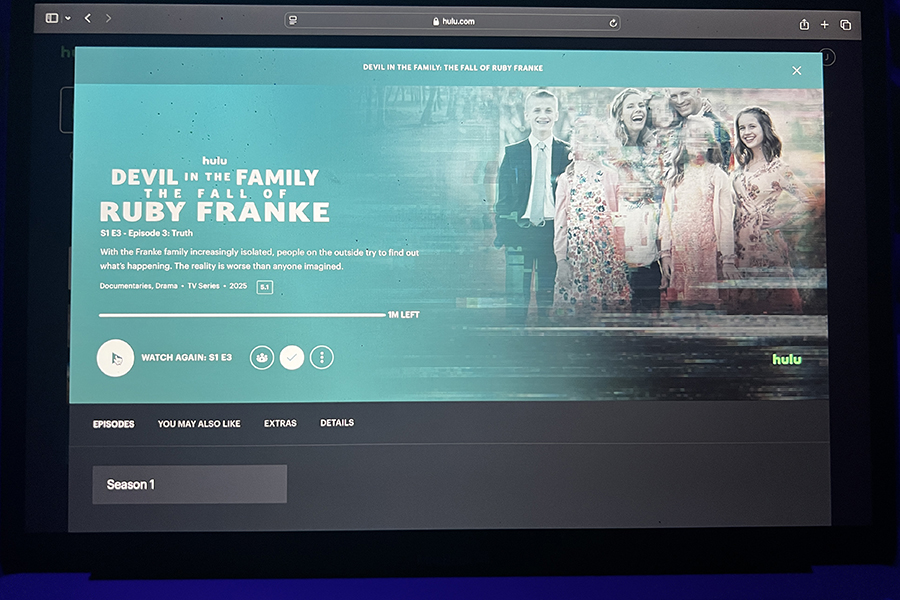After the election last November, it became obvious that the people of the United States had very different views regarding major aspects of the country’s policies. Immigration, the war in Iraq, the economic crisis and our nation’s health care system were just a few of the that divided our nation. It’s been almost a year since the election and yet politicians are still trying to come to an agreement on how to solve the nation’s problems. The nation’s health care system is the issue that has been the most controversial so far. There have been many plans drafted, yet a consensus has yet to be reached. The version that is currently up for debate (H.R.3200) in Congress presents many new ideas for legislators to consider. The reforms aim to implement a number of delivery system changes intended to rein in health care costs and align incentives for hospitals, physicians and others to improve quality.
The health care system in this country is comprised by all of the entities that have a direct relationship with the overall costs involved in receiving medical care. This includes hospitals, private doctors, prescription drugs, insurance companies and wellness plans. In order to pay for health care, Americans utilize medical insurance from various sources. Health care insurance plans are usually funded, at least in part, as an employee benefit. Additional benefits are available for the poor and seniors through government funded programs such as Medicaid and Medicare.
Critics of the plan argue that the idiosyncrasies of health care reform will cause more harm than good. Some are concerned that a public insurance option will add to the national debt. Others contest that the reforms will create a system where patients will have to jump through bureaucratic hoops in order to receive care. The most volatile debate in the health care reform discussion has been over the inclusion of a “public option.” The public option is a government-run health plan (similar to Medicare) that would be available to all people, not just seniors. A particularly verbal section of Congress has complained that this option would limit the resources for private medical insurance companies. There is a fear that the private sector could collapse if the government option is too popular.
Still, many people argue that the state of the health care system is not even an issue because they are happy with their current insurance policy and are getting the medical help they need. Others argue that their insurance is either too expensive or that they can’t afford even basic coverage and that the health care in other countries is much more efficient. Proving that, however, is tough because you have to take into account a wide range of factors for each country.
To assess the efficiency of a country’s health care system, you have to look at the health status of the entire population, patients’ experience with health services, patient safety and the methods and results of care for specific conditions. Similarly, the quality of the care itself is hard to determine. This is because it could be affected by the lifestyle, socioeconomic status, access to care or even financial barriers across a population. Even then, it’s hard to correctly perceive the data once it is obtained because there are several limitations to consider. Different data sources, time periods when the data was collected, factors such as differences in age, or the interpretation of the questions asked all effect the results of surveys. Reliable information regarding the ranking of the United States’ health care system, compared to those of other countries, is therefore tough to find. What each side can agree on is that health care costs are too high and are rising quickly. The real debate is on how to solve this problem, and that’s where things get tricky.
Republicans typically believe in limited government-run programs. The health care reform that is currently being proposed in Congress is a plan in which the government will provide an option to insure millions of people. Republicans view this as yet another way to put the country further in debt, and taxes will be increased to pay for that debt. In addition, Republicans feel that health care is an individual’s responsibility. The bill is also very complicated and lengthy (around a thousand pages long), and many speculate that most of the Congress has yet to even read it in its entirety.
After the stimulus bill passed earlier this term, many Republicans have lost faith in their representatives’ ability to fully understand the financial implications of this bill. Although some Republicans believe that everyone deserves health care, they realize that the government policies proposed are not the most efficient way to distribute it.
There is also a concern that the government will manage an individual’s care in ways that other countries have and it will diminish the quality of the care. Some say that this has happened in countries like Canada and England, where they have a universal health care system. If the current proposal is passed, the government may have the ability to decide who has priority for expensive procedures. Some suspect that this would prevent at-risk patients from receiving care because it might not be deemed worthwhile.
Most Democrats have been dissatisfied with the current system for years. Many believe that government should have the primary responsibility for ensuring that all Americans have access to health care, and are willing to pay higher taxes, if necessary, to make that happen. However, most Democrats believe that costs will go down when the government uses their negotiating clout to lower the costs associated with medicine and treatments. Additionally, they expect to see savings from more care going into prevention and doctor and clinic use as opposed to the uninsured waiting until they are so sick that they need to visit emergency rooms.
The essence of the problem is this: health care costs are increasing rapidly and citizens are scrambling to be able to afford the bill. Our political parties are miles apart from reaching a consensus on how to tackle this issue. The Obama administration is now struggling to come up with a palatable compromise that will satisfy the need to reduce costs while preserving individuals’ ability to choose the option best for them.

![Posing with their UIL State Trophy, the Robolobos Van Halen Team beams with excitement after their win. “It was a team effort,” junior Noah Vo said. “I was happy because something happened in the first match and the match was also really close. So [when] they finally revealed it, I was pretty happy.” Photo courtesy of Amy Lovelace](https://cphswolfpack.com/wp-content/uploads/2025/05/IMG_0910-EDIT-1200x723.jpg)

![Broadcast, yearbook and newspaper combined for 66 Interscholastic League Press Conference awards this year. Yearbook won 43, newspaper won 14 and broadcast took home nine. “I think [the ILPC awards] are a great way to give the kids some acknowledgement for all of their hard work,” newspaper and yearbook adviser Paige Hert said. “They typically spend the year covering everyone else’s big moments, so it’s really cool for them to be celebrated so many times and in so many different ways.”](https://cphswolfpack.com/wp-content/uploads/2025/05/edited-ILPC.jpg)













![Bringing her arm over her head and taking a quick breath, junior Lauren Lucas swims the final laps of the 500 freestyle at the regionals swimming competition on date. Lucas broke the school’s 18-year-old record for the 500 freestyle at regionals and again at state with a time of 4:58.63. “I’d had my eye on that 500 record since my freshman year, so I was really excited to see if I could get it at regionals or districts,” Lucas said. “ State is always a really fun experience and medaling for the first time was really great. It was a very very tight race, [so] I was a bit surprised [that I medaled]. [There were] a lot of fast girls at the meet in general, [and] it was like a dogfight back and forth, back and forth.” Photo by Kaydence Wilkinson](https://cphswolfpack.com/wp-content/uploads/2025/03/Kaydence-2.7-23-edit-2.jpg)
![As the support team sits and poses for a photo in the cafeteria with the counseling team they eagerly wait to start their day. "We [all] seem to be a team, I get up every day and there's days where I don't want to go to work today, but I'm thankful that I have a job and I'm blessed to have what I have," Christopherson said. Photo Courtesy of Julie Weltens.](https://cphswolfpack.com/wp-content/uploads/2025/01/AF9E8470-10D7-4C91-BF28-EC8F86BAB66C-1200x852.jpeg)
![Officer Stephanie Cash is in her second year as an SRO at CPHS. “Seeing [students] grow over the years has been kind of cool,” Officer Cash said. “Freshmen that [are] all over the place and then in the next couple of years get a little more squared away and go to class and do work and start thinking about the future. Being a part of a student's growth is the best way to measure my success as an SRO.” Photo Courtesy of Cedar Park Police Department's PIO, Alicia Gallagher.](https://cphswolfpack.com/wp-content/uploads/2024/12/CPHS-SRO-900x1200.jpg)



![Taking a breath as he raises his arm up and out of the water, sophomore Kaden Padilla swims the 500 freestyle at the UIL state meet on Feb. 21-22. Padilla placed 10th overall and second in the consolation final in the event, dropping two seconds. “My family was there, so being able to drop time for them was really special,” Padilla said. “It was awesome [finding out I advanced to the consolation finals]. I wasn’t expecting it, and I was very surprised. My parents being there definitely made me a lot happier knowing they got to see me swim in finals.” Photo by Skyler King.](https://cphswolfpack.com/wp-content/uploads/2025/03/kaden-padilla.jpg)

![Three defenders try to stop senior point guard Hope Edwards before the ball leaves her hands. The girls basketball team faced Liberty Hill on Feb 21, losing 58-40. “[My season was] definitely bittersweet,” Edwards said. It's definitely sad [because] I'm gonna miss all my teammates, my coaches and just the whole CP environment.”](https://cphswolfpack.com/wp-content/uploads/2025/03/julia-128-1200x800.jpg)













